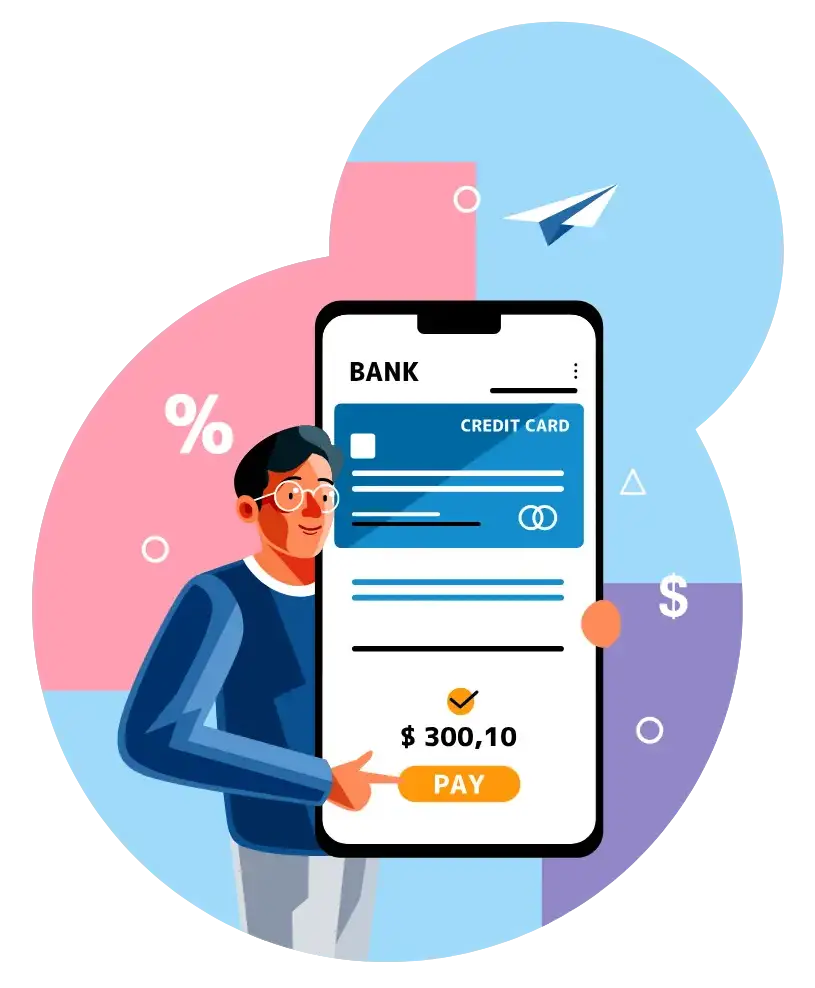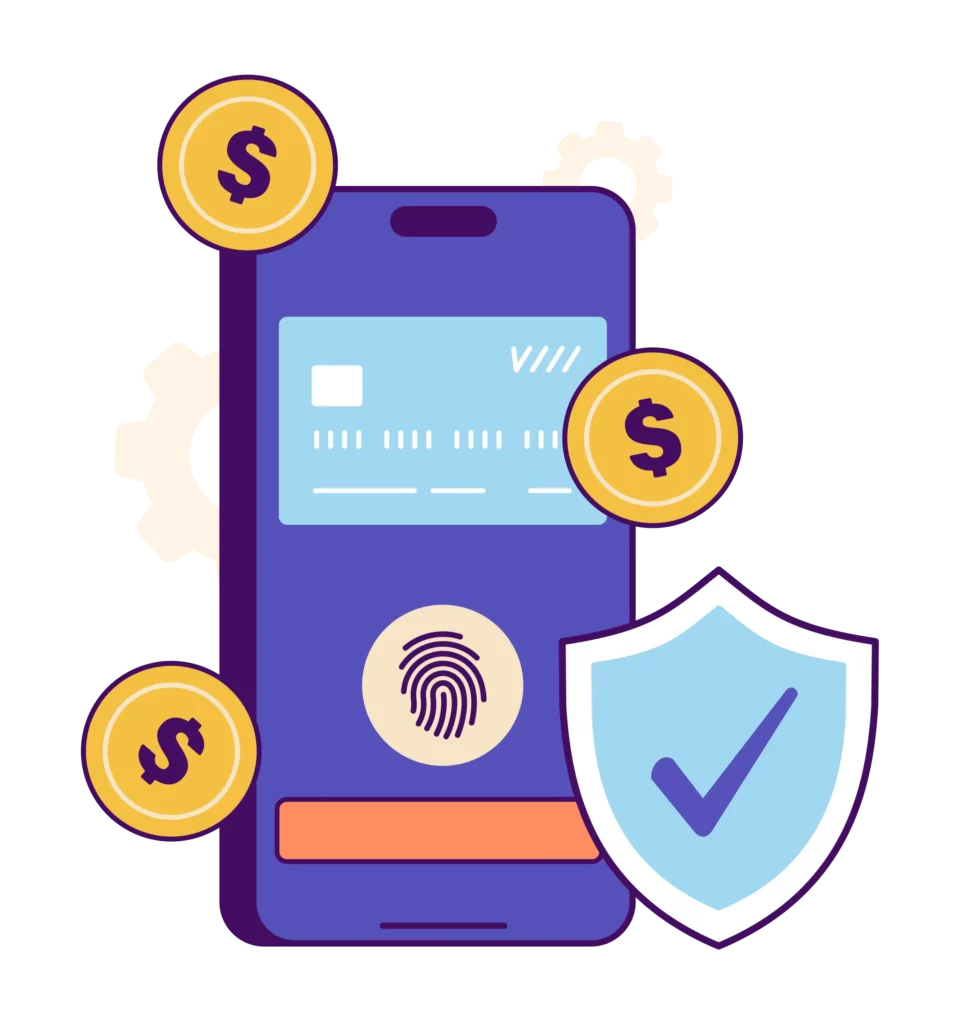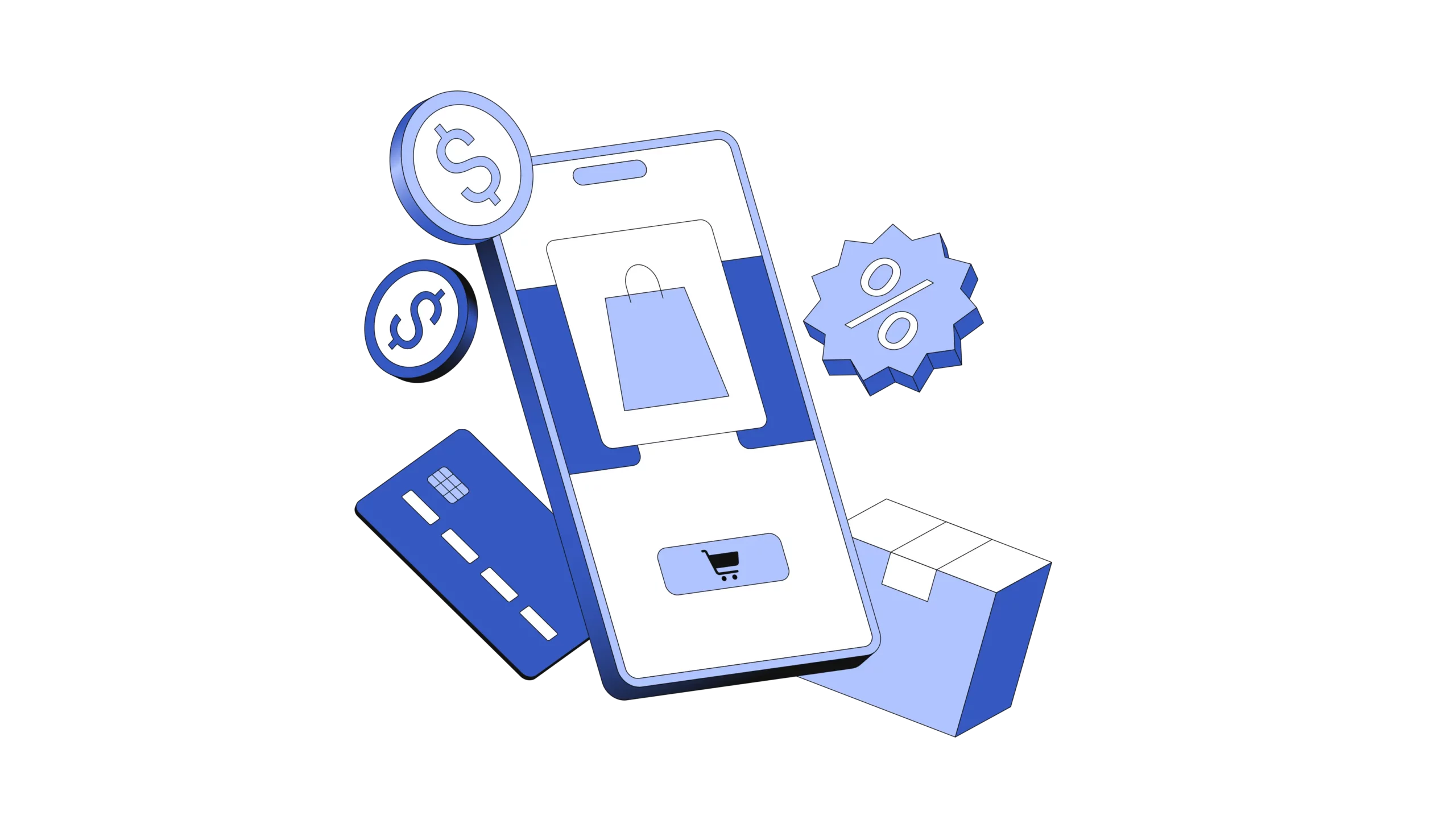If you’re sending most of your invoices via email, it’s probably not surprising that they sometimes get missed — spam filters, sorting rules, and inbox overload all play a role. In fact, the average email open rate is around 20%, depending on the industry.[1]Omnisend. “What Is a Good Open Rate for Email: A Detailed Guide for 2025.” Accessed July 24, 2025. That’s just one reason why text-to-pay is such a compelling option for businesses. In this article, we’ll explore how text-to-pay works, its advantages, the types of operations that benefit, and how to roll out SMS payments at your business.
Key Takeaways
- Text-to-pay is an increasingly popular mobile payment option for business-to-business and direct-to-consumer operations.
- SMS payments can offer businesses a range of benefits, from streamlined payment convenience to better account reconciliation and enhanced customer convenience.
- Creating an effective text-to-pay strategy usually doesn’t require a major lift or pivot for your payment operations.
What Is Text-to-Pay?
Text-to-pay lets businesses send secure payment links directly to customers via SMS. Once a customer opts in to receive texts, they can initiate payments via links sent in SMS, which then direct them to a browser-based virtual payment terminal. It’s a secure payment method that often doesn’t require an app download, login, or third-party redirection.
Text-to-pay services typically offer the following features:

- Customer Authorization: Customers must first opt-in to receive messages from your business. This opt-in also provides a record of consent for future reference in the event of a dispute later.
- Simplified Accounting: Because the invoices sent via text messages are created with your accounting software, reconciling and invoicing are more manageable tasks. Accounts payable and receivable can update automatically as customers receive and pay their invoices.
- Secure Payment Portal: After customers receive their invoice via text message, they can click the link within the text message and be directed to a secure payment portal. This portal can process their payments quickly, securely, and in a way that is PCI compliant.
- Automated Reminders: Pay-by-text allows you to send payment reminders, balance updates, recurring billing notifications, and other communications at intervals of your choosing.
- Speciality Billing Options: Pay-by-text services can support more complex types of bills, such as recurring subscriptions, membership fees, or split payments.
- Payment Confirmations: Once a payment has been received, both you and your customer receive confirmation, making communication incredibly simple.
How Does Text-to-Pay Work?
Pay-by-text technology connects your point-of-sale or billing software to an SMS texting platform. This can allow your business to accept card-not-present transactions, process in-person payments without a payment terminal, and accept payments on the go. A typical text-to-pay transaction is fairly simple:
- First, your customer must opt-in to accept text messages from your business.
- Once they’ve opted in, you can create an invoice in your point-of-sale or billing software and select to share a pay-by-text link.
- When the customer receives your text, the embedded link will direct them to a secure payment page. Depending on the processor, they could use a credit or debit card, digital wallet, or alternative payment methods.
- Once the payment has been processed, both parties will receive a confirmation notification. The payment will then show up in your point-of-sale system like any other, making reconciling and inventory management a breeze.
Benefits of an SMS Payment System
There are several benefits to using a text-to-pay solution or SMS payment system, including:
- Error-Free Invoicing: Integration with your accounting software reduces manual entry, making it easier to track and reconcile payments. This helps you quickly identify and correct errors, as well as reduce error-based payment delays.
- Reduced Paperwork: Text-to-pay can streamline account reconciliation and reduce your accounting team’s paperwork by connecting directly to your point-of-sale and/or accounting software.
- Improved Engagement: Text-to-pay can bypass spam filters on emails and offer more payment options that allow customers to pay how they prefer. Plus, younger demographics prefer texts over emails or phone calls.
- Faster Payments: The time between sending and receiving payment for a text message invoice can be seconds, an improvement over emailed or mailed invoices.
While text-to-pay has significant benefits, there may also be some drawbacks. For one, SMS payments are often PCI-compliant, but that’s not always the case. Businesses must ensure that their chosen SMS payment providers implement robust security protocols, including PCI compliance. Moreover, businesses must also utilize best practices during text-to-pay implementation to ensure unauthorized individuals cannot impact the transaction.
What Kind of Businesses Can Benefit from Paying by Text?
Almost any business can make use of systems that support paying by text. They may add fewer benefits to brick-and-mortar stores with existing payment terminals, but other businesses interested in how to accept mobile payments may access many benefits. These may include:
- Contractors like HVAC technicians, roofers, plumbers, and other professionals who invoice for in-home services can collect SMS payments on the spot.
- Veterinarians or other healthcare workers who make in-home visits may want a way to accept payments without the use of a card reader.
- Farmer’s market vendors or pop-up stores can provide their out-and-about customers who likely have their phones on hand a convenient way to pay by text.
- Restaurants that want to reduce wait time can allow guests to pay the bill by text, so they don’t have to wait for the bill after dessert.
How to Create an Effective Text-to-Pay Strategy
Creating an effective text-to-pay strategy can be a simple process:

- Define Objectives: First, you must understand what you want to achieve with text-to-pay. This may include responding to customer requests for alternative payment options, reducing administrative work, or something else.
- Choose the Right Provider: Consider fees, security measures, reliability, and customer support services.
- Integrate with Payment Systems: Your text-to-pay provider should help you integrate text-to-pay with your current billing and payments software. This allows you to manage payments and maintain records more effectively.
- Maximize User Experience: Take the time to optimize the way you create and send invoices, ensuring that the user experience is seamless. This includes training your staff to use text-to-pay properly.
- Promote Text-to-Pay: Tell your customers about the new payment method through email, social media, or even in person. Just make sure you’ve obtained proper consent and stay compliant with TCPA rules.
- Gather Feedback and Monitor Performance: Use quantitative and qualitative metrics to understand how text-to-pay impacts your business. Survey customers about their experience and analyze data to see how it’s performing. Always be prepared to tweak your strategy as necessary.
What Are the Charges and Costs for Implementing Text-to-Pay?
The cost of text-to-pay varies depending on your provider. Some text-to-pay providers charge by text message, while others charge a monthly fee or a one-time lump sum license fee. Providers may also charge for additional features, like automations or customizations. Check with your potential text-to-pay provider to understand the costs.
Security and Best Practices for Text-to-Pay
Any time you accept payments or gather customer information, it’s imperative to use secure solutions. Many text-to-pay solutions are PCI-compliant, but you must confirm this before working with a partner. Likewise, assess a potential partner’s security features to understand how they handle customer data and what fraud prevention measures they have in place. Verifying that they utilize security protocols like encryption, tokenization, and two-factor authentication can protect your customers’ information and your business from compliance violations.
Fast Track Your Payments Using a Text-to-Pay Service
The more ways you offer your customers to pay, the less friction there will be in collecting payments. For most businesses, text-to-pay adds a compelling option with benefits to both their customers and operations. While there are costs of implementing text-to-pay, they’re usually outweighed by the benefits of convenience, efficiency, and customer satisfaction. To learn more about how to set up secure, streamlined text-to-pay systems that integrate with your payment systems, check out PaymentCloud’s mobile payment solutions.
Text-to-Pay FAQs
Does text-to-pay allow for recurring payments?
Most text-to-pay systems support recurring payments.
Is text-to-pay a secure payment method?
Text payments are generally a safe option for businesses to accept customer payments. Because of how it is set up, your customer pays through a secure payment portal, ensuring their card data gets processed safely. However, older customers may perceive text payments as unsafe, especially if they don’t recognize you as the sender.
How long does it take to process SMS payments?
SMS payments can be initiated within seconds, but final processing times depend on the payment processor and banking approval. Settlement typically takes one to three business days.






